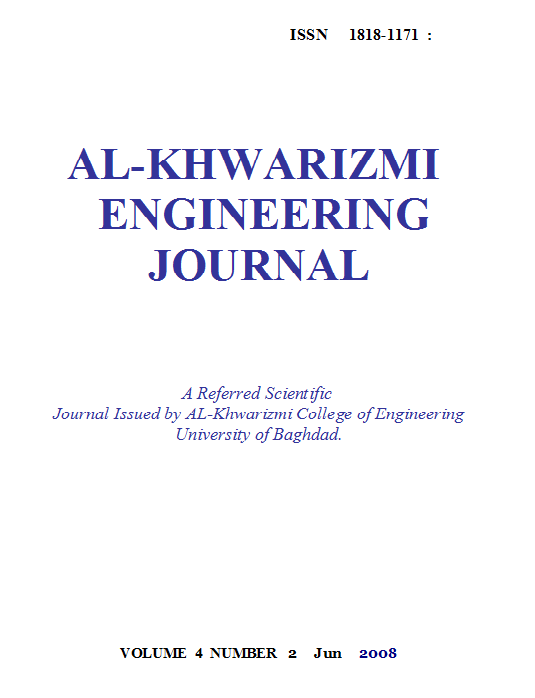Semi-Active Damping of Mechanical Vibrating Systems Using Variable Stiffness Actuator
Abstract
In this research, a variable stiffness actuator is proposed to enhance the damping of the mechanical vibrating system. The frequency response analysis of the vibrating system is dependant in order to analyze and synthesis this semi-active damping, where the suggested process is using active filter to estimate the present frequency of the vibration system, and this will limit the value of the stiffness of the vibrated system. Two active filter s are needed, low-pass-filter (LPF) to choose the higher stiffness of the actuator at small frequencies as well as more damping and high-pass-filter (HPF) to choose the lower stiffness of the actuator at high frequencies as well as more damping, and so the result will be good damping as a wholre.
These smart systems and others will increase the importance of the mechatronics systems. This job has a case study to explain the semi-active damping system proposed.
Downloads
References
[2] Markus J. Hochrainer “Investigation of active and passive tuned liquid column dampers for structural control” Institute of rational mechanics/ Austria, 2002.
[3] Swaroop K.Yalla, Ahsan kareem and Jeffery .Kantor “Semi-active tuned liquid column dampers for vibration control of structures “ Engineering structure 23, 2001.
[4] A. Abu Habieh, M. Horodinca & A. Preumont. N.Loix & J.Ph. Verschueren, “Stiff and Soft Stewart Platforms for Active Damping and Active Isolation of Vibrations”, ACTUATOR 2002, 8th International Conference on New Actuators, 10-12 June 2002, Bremen, Germany.
[5] Lawrence J. Alder and Stephen M. Rock, “Adaptive Control of a Flexible-Link Robotic Manipulator with Unknown Payload Dynamics”, the American Control Conference, San Francisco, CA, June 1993.
[6] Ronald H. W. Hoppe, George Mazurkevitch, Uwe Rettig, and Oskar von Stryk, “Modeling, Simulation, and Control of Electrorheological Fluid Devices”, University of Augsburg, Inst. Of. Math., D-86159 Augsburg, Germany.2002.
[7] MARIA A. HECKL AND I. D. ABRAHAMS, “Active Control of Friction-Driven Oscillation”, Journal of Sound and Vibration 193(1), 417-426, 1996.
[8] Genda Chen and Derek Smith, “Efficiency of Piezoelectric Wedge Actuators for Fine Tuning of Mass Dampers in Structural Applications”, 15th ASCE Engineering Mechanics Conference. June 2-5, 2002.
[9] J. Millman, “ microelectronics “ , Graw-Hill 2000.
[10] Lawrence B. Tentor, “Characterization of electromagnetic tuned vibratio absorber “ Dissertation submitted to the faculty of the Virginia polytechnic Institute and state university in partial fulfillment of the requirements for the degree of Doctorate of philosophy in mechanical engineering,2001.
[11] Christopher T.Kilian, “modern Control technology; components and systems” Graw Hill, 2001.
Downloads
Published
Issue
Section
License
Copyright: Open Access authors retain the copyrights of their papers, and all open access articles are distributed under the terms of the Creative Commons Attribution License, which permits unrestricted use, distribution, and reproduction in any medium, provided that the original work is properly cited. The use of general descriptive names, trade names, trademarks, and so forth in this publication, even if not specifically identified, does not imply that these names are not protected by the relevant laws and regulations. While the advice and information in this journal are believed to be true and accurate on the date of its going to press, neither the authors, the editors, nor the publisher can accept any legal responsibility for any errors or omissions that may be made. The publisher makes no warranty, express or implied, with respect to the material contained herein.












